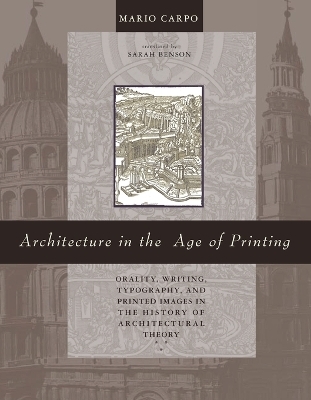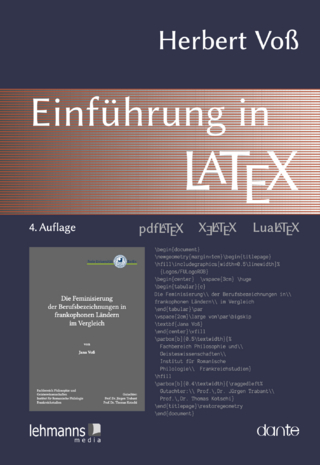
Architecture in the Age of Printing
Orality, Writing, Typography, and Printed Images in the History of Architectural Theory
Seiten
2017
MIT Press (Verlag)
978-0-262-53409-3 (ISBN)
MIT Press (Verlag)
978-0-262-53409-3 (ISBN)
A history of the influence of communication technologies on Western architectural theory.
The discipline of architecture depends on the transmission in space and time of accumulated experiences, concepts, rules, and models. From the invention of the alphabet to the development of ASCII code for electronic communication, the process of recording and transmitting this body of knowledge has reflected the dominant information technologies of each period. In this book Mario Carpo discusses the communications media used by Western architects, from classical antiquity to modern classicism, showing how each medium related to specific forms of architectural thinking.
Carpo highlights the significance of the invention of movable type and mechanically reproduced images. He argues that Renaissance architectural theory, particularly the system of the five architectural orders, was consciously developed in response to the formats and potential of the new printed media. Carpo contrasts architecture in the age of printing with what preceded it: Vitruvian theory and the manuscript format, oral transmission in the Middle Ages, and the fifteenth-century transition from script to print. He also suggests that the basic principles of "typographic" architecture thrived in the Western world as long as print remained our main information technology. The shift from printed to digital representations, he points out, will again alter the course of architecture.
The discipline of architecture depends on the transmission in space and time of accumulated experiences, concepts, rules, and models. From the invention of the alphabet to the development of ASCII code for electronic communication, the process of recording and transmitting this body of knowledge has reflected the dominant information technologies of each period. In this book Mario Carpo discusses the communications media used by Western architects, from classical antiquity to modern classicism, showing how each medium related to specific forms of architectural thinking.
Carpo highlights the significance of the invention of movable type and mechanically reproduced images. He argues that Renaissance architectural theory, particularly the system of the five architectural orders, was consciously developed in response to the formats and potential of the new printed media. Carpo contrasts architecture in the age of printing with what preceded it: Vitruvian theory and the manuscript format, oral transmission in the Middle Ages, and the fifteenth-century transition from script to print. He also suggests that the basic principles of "typographic" architecture thrived in the Western world as long as print remained our main information technology. The shift from printed to digital representations, he points out, will again alter the course of architecture.
Mario Carpo is Reyner Banham Professor of Architectural History and Theory, the Bartlett, University College London. He is the author of Architecture in the Age of Printing: Orality, Writing, Typography, and Printed Images in the History of Architectural Theory and The Alphabet and the Algorithm (both published by the MIT Press) and other books.
| Erscheinungsdatum | 09.02.2017 |
|---|---|
| Reihe/Serie | Architecture in the Age of Printing |
| Übersetzer | Sarah Benson |
| Zusatzinfo | 27 illus. |
| Verlagsort | Cambridge, Mass. |
| Sprache | englisch |
| Maße | 178 x 229 mm |
| Themenwelt | Kunst / Musik / Theater ► Design / Innenarchitektur / Mode |
| Informatik ► Grafik / Design ► Desktop Publishing / Typographie | |
| Technik ► Architektur | |
| ISBN-10 | 0-262-53409-6 / 0262534096 |
| ISBN-13 | 978-0-262-53409-3 / 9780262534093 |
| Zustand | Neuware |
| Haben Sie eine Frage zum Produkt? |
Mehr entdecken
aus dem Bereich
aus dem Bereich


